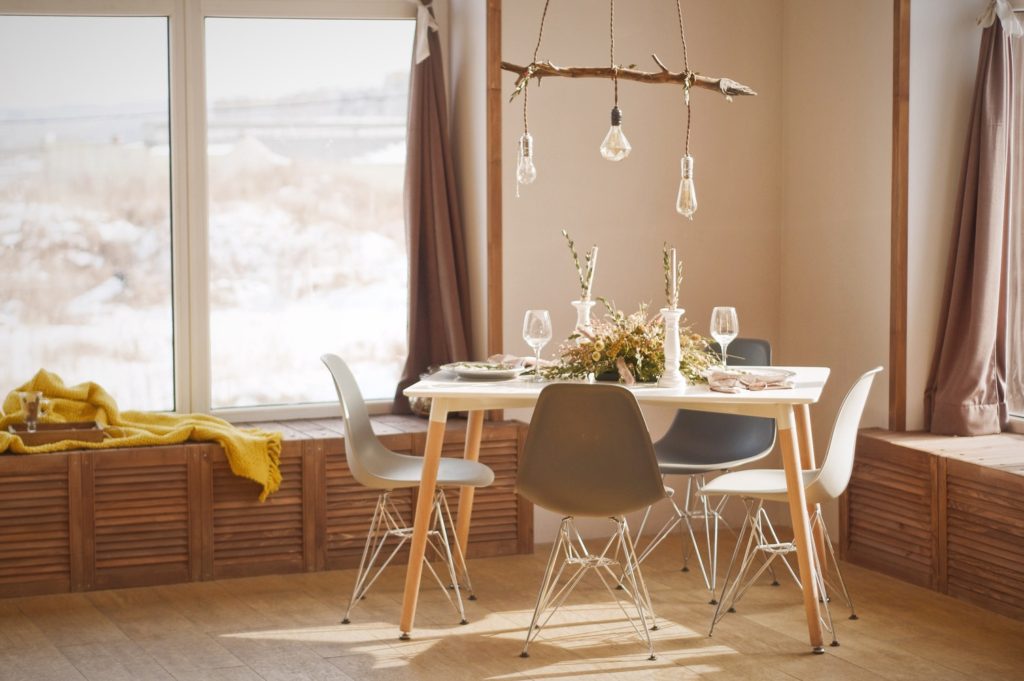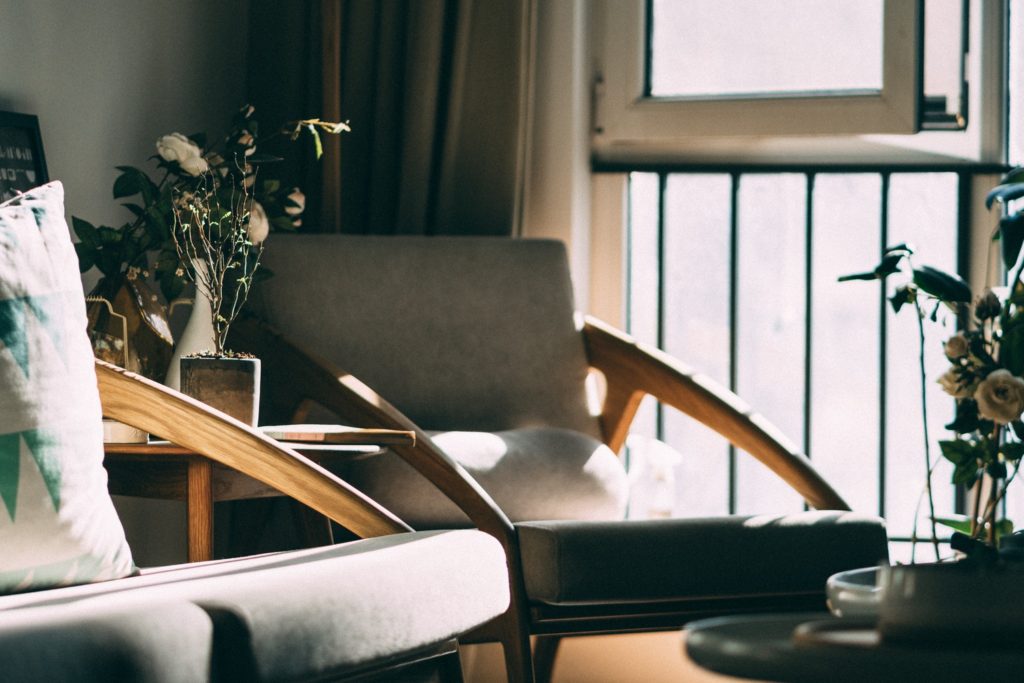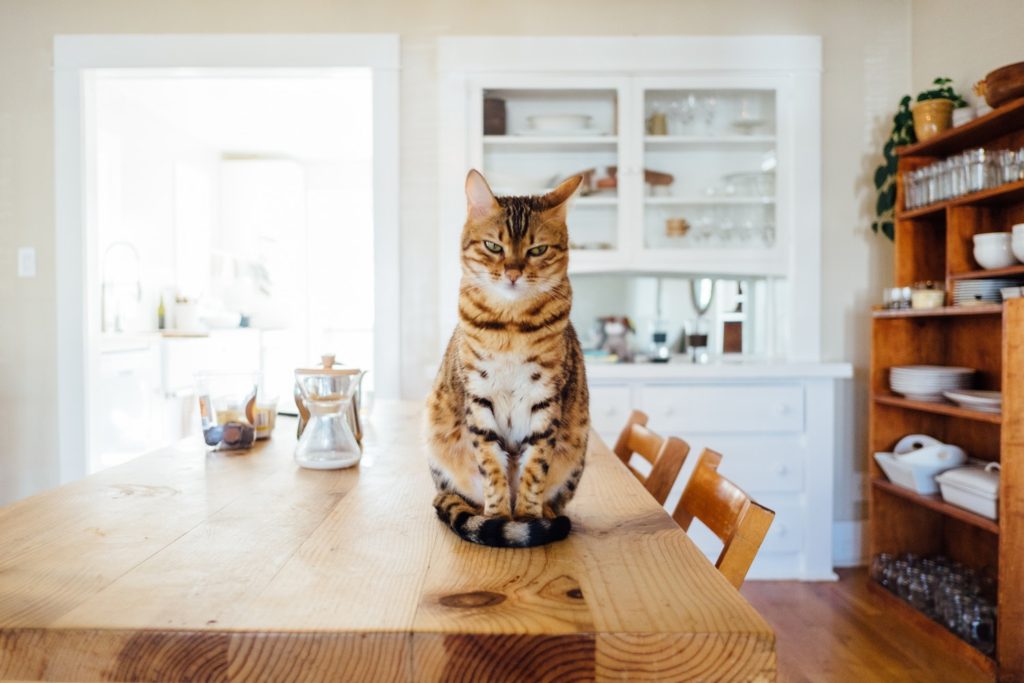We all love brightness in our homes, and invite light gladly in our efforts to create biophilic spaces. But once we’ve invested so much thought, time, and finances into perfecting our interiors and bringing out the ambience with various elements, such as large windows and skylights, we’re faced with a problem. The same quality that we aimed for – lots of natural light – now poses a threat to our furnishings and artwork hung on walls. Even when there is no direct sunshine, harmful UV rays are still present, penetrating into our interiors and slowly causing damage to floors, carpets, and furniture. These effects show with time, and if we’re not careful, they can leave our things looking worn-out and damaged while they’re still new. Here are ways to prevent that from happening – while still allowing brightness to pour into your home.
Words: Catherine Palmer
Protecting wooden furnishings Wooden floors and furniture give an atmospheric quality to interiors, especially in bright, airy spaces. But sun causes permanent discoloration on wood, and depending on the type, the wood will fade or darken with time as a result of sun exposure. To protect wooden furnishings from UV rays, it’s recommended to use wood sealant. There are various kinds:
Wooden floors and furniture give an atmospheric quality to interiors, especially in bright, airy spaces. But sun causes permanent discoloration on wood, and depending on the type, the wood will fade or darken with time as a result of sun exposure. To protect wooden furnishings from UV rays, it’s recommended to use wood sealant. There are various kinds:
- Varnish: used as a top coat, easy to apply, durable, and has low toxicity. Newer varnish is water-based and ideal for indoor furniture as it dries quickly. Varnish comes in a variety of finishes, from matte to high-gloss, and also offers protection from everyday wear.
- Lacquer: easy to apply, polish, and upgrade with time. Lacquer gives furniture an intense gloss finish along with strong protection, but it is best avoided on coarse grain wood (i.e. oak) or very soft wood such as cedar.
- Polyurethane: either water- or oil-based. The former has a low toxicity level but costs twice as much as the oil-based option. Both kinds are very durable and offer great protection, but they tend to crack under heat and sudden shock, so they’re not really meant for intricately carved furniture.

Other options include shellac and wax and oil finishes, but although they bring out and enhance the rich warmth of wooden materials, they’re not nearly as durable or protective as other finishes. Select the type of sealant based on the type of wood you’re looking to protect, and keep in mind that softwood requires more maintenance than hardwood. In the end, it’s best to organize your space so that certain pieces are not constantly exposed to sunlight.
Window furnishings As we previously mentioned, when it comes to wooden furniture, no matter which sealant you use or how regularly you maintain it, it’s still best to avoid constant and direct sunlight. Not to mention, fabrics inside your home that can’t be sprayed with a protective coating also call for appropriate window furnishings to be installed. Professionals offer a range of window furnishings in Australia, and at reasonable prices, unsurprisingly, considering the average Australian home really can’t do without proper protection from all that sunshine.
As we previously mentioned, when it comes to wooden furniture, no matter which sealant you use or how regularly you maintain it, it’s still best to avoid constant and direct sunlight. Not to mention, fabrics inside your home that can’t be sprayed with a protective coating also call for appropriate window furnishings to be installed. Professionals offer a range of window furnishings in Australia, and at reasonable prices, unsurprisingly, considering the average Australian home really can’t do without proper protection from all that sunshine.
Whether you choose curtains, blinds, shutters or awnings, having a retractable furnishing will make it easy for you to protect your furniture from sunlight when it is at its peak in the room, while giving you maximum control of the amount of light in your home throughout the day. If chosen well, they’re also a marvellous addition to the overall design of the home. This May, the world preview of furnishing fabrics and curtains will be held in Italy and we’ll be sure to get plenty of new ideas.
Solar window film
Modern solar coatings for windows are capable of rejecting 99% of the sun’s damaging rays and reducing up to 78% of the sun’s heat. Newer technology allows these tints to remain clear, but they evenly disperse natural sunlight, reducing glare and thus actually enhancing views of the outside. They are very energy efficient and great at controlling the microclimate of your home, so it’s no surprise that they’re amongst the pricier options. It’s best to use them in places where you want to expose your valued artwork and furniture, and for windows that offer you a great view. Essentially, they’re best used in combination with window furnishings inside your home.
Upholstery fabrics Unfortunately, natural materials are much more prone to wearing out in the sunlight than man-made ones; cotton and wool will look faded much faster than solution-dyed acrylic and polyester fabrics. Many upholstery fabrics have a classification on their label determining their light resistance on a scale of 1 to 5 – five presenting strong colour fastness. Look for these labels and don’t shy away from choosing outdoor furniture for particularly sunny parts of your home, as outdoor furniture design has developed wonderfully. For leather furniture, it’s important to keep it away from sunshine as leather tends to dry out and crack with time. Polish it with leather conditioner occasionally.
Unfortunately, natural materials are much more prone to wearing out in the sunlight than man-made ones; cotton and wool will look faded much faster than solution-dyed acrylic and polyester fabrics. Many upholstery fabrics have a classification on their label determining their light resistance on a scale of 1 to 5 – five presenting strong colour fastness. Look for these labels and don’t shy away from choosing outdoor furniture for particularly sunny parts of your home, as outdoor furniture design has developed wonderfully. For leather furniture, it’s important to keep it away from sunshine as leather tends to dry out and crack with time. Polish it with leather conditioner occasionally.
Autumn is already here, and as the sun sets low and splashes into our homes, it’s a good time to think about all these options. With proper care and investment, we can have it all – plenty of light and well-kept furniture.


